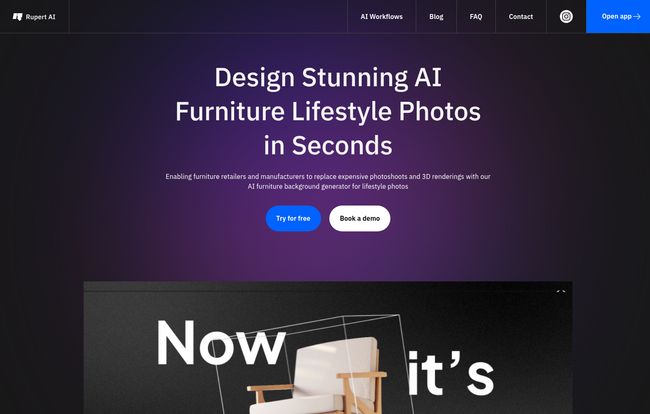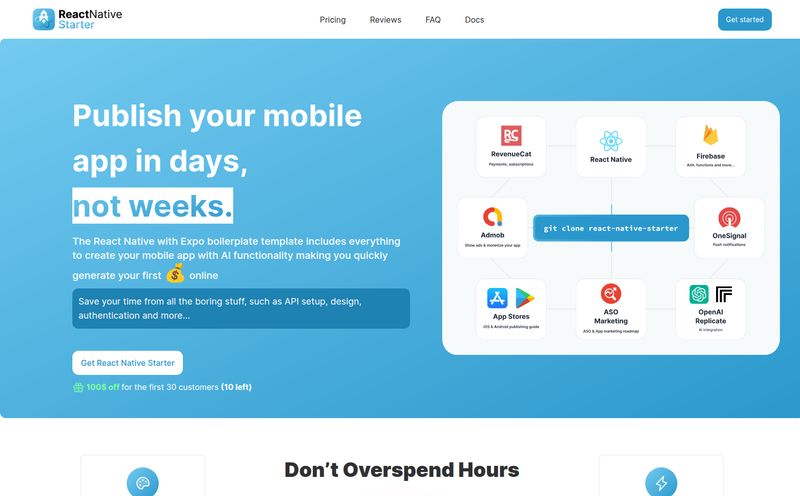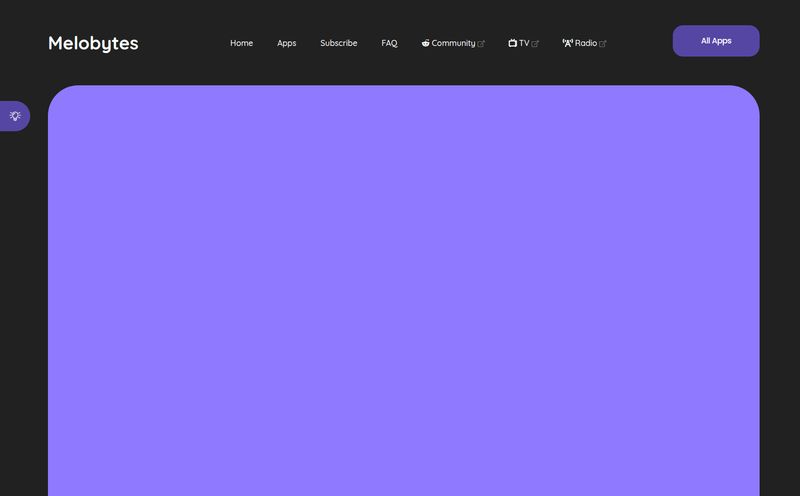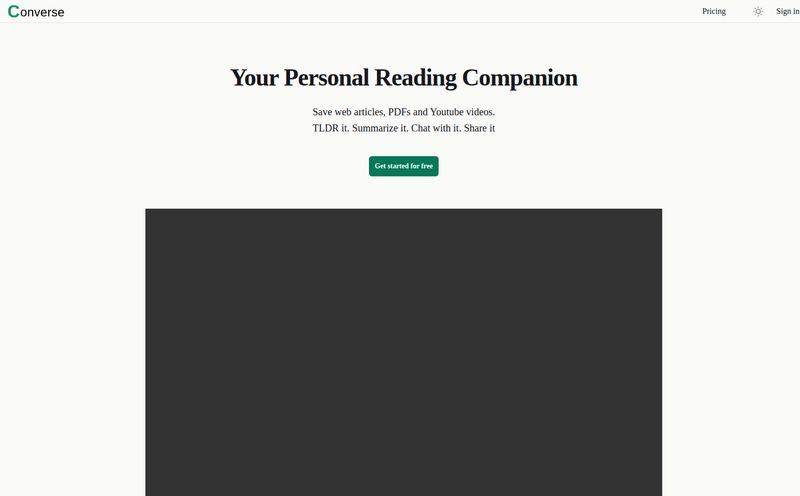If you've ever been involved in marketing for a furniture brand, you know the singular pain of the product photoshoot. It's a logistical migraine. You're talking about renting a studio, hiring photographers, shipping a 200-pound oak sideboard across the state, and then paying a stylist a small fortune to make it look 'effortlessly chic' next to a ficus plant and a tastefully placed art book.
It costs a fortune, takes forever, and by the time you get the images, you've got five new SKUs that need the same treatment. We've all been there, staring at a spreadsheet, wondering if we could just... you know, Photoshop the chair into a picture of a nice living room. The results are usually, well, less than stellar.
For years, the only alternative was complex 3D rendering, which came with its own set of specialists and hefty price tags. But the ground is shifting. I've been keeping a close eye on AI's march into the creative space, and I recently stumbled across a platform called Rupert AI. And I have to say, it’s one of the more compelling solutions I’ve seen for this age-old problem.
What Exactly is Rupert AI Anyway?
So, what's the magic here? Rupert AI is an artificial intelligence platform built specifically for furniture retailers and manufacturers. Its main gig is generating gorgeous, high-quality lifestyle photos of your products without you ever needing to see a camera or a real-life room. Think of it as having a tireless, infinitely creative interior designer and photographer on speed dial, ready to work 24/7.
You give it a clean shot of your product—that classic 'white background' image you already have—and the AI does the heavy lifting. It intelligently places your furniture into a huge variety of stylish, photorealistic settings. A minimalist Scandinavian loft? Done. A cozy, rustic farmhouse living room? You got it. All in a matter of seconds.

Visit getrupert.com
The Endless Headaches of Old-School Product Shoots
I can't overstate how much of a departure this is. I once worked on a campaign for a mid-sized furniture company, and our quarterly photography budget was enough to make your eyes water. We're not just talking about the photographer's day rate. There's the studio rental, the insurance, the transport logistics for heavy items, the set designer, the props (which you have to buy or rent), and the endless hours of post-production to get the lighting just right.
And what if you want to show that same armchair in five different settings to appeal to different customer personas? That's five completely different setups. The costs and time multiply like crazy. It’s a model that feels incredibly outdated in an age of agile marketing and rapid A/B testing.
How Rupert AI Changes the Game
This is where a tool like Rupert AI feels less like an iteration and more like a revolution. The benefits are pretty obvious, but let's break them down. First, the cost and time savings are monumental. You're collapsing a weeks-long, five-figure process into a few minutes and a handful of clicks. The platform claims its clients generate over 20,000 high-quality images a month, which is a scale that's simply unimaginable with traditional methods. It allows you to create an entire library of visual assets for every single product, tailored for different seasons, styles, and marketing channels. Imagine being able to instantly generate fresh creative for a summer sale or a winter holiday campaign. That's powerful stuff.
More Than Just Pretty Backgrounds
When I first looked at Rupert AI, I thought it was purely an AI furniture background generator. But digging a bit deeper, I found a few other features that really caught my eye. It seems they're thinking bigger than just static images.
A Surprise Appearance from AI Fashion Models
This was an interesting find. Alongside the furniture tools, they offer an AI Fashion Model Generator. At first, it seems a bit random, but then it clicks. What if you want to show the scale of a chair? Or create a more dynamic scene for a social media ad? Placing a photorealistic AI-generated person into the scene adds context and a human element that can seriously boost engagement. It's a clever, adjacent offering.
Testing Your Ads Before They Cost You a Dime
For a CPC and traffic-gen guy like me, this was the feature that made me sit up straight. They have a Facebook Ad Testing Tool. This suggests you can generate multiple visual variations of an ad and get predictive insights on their performance before you spend a single dollar on the ad platform. If this works as advertised, it's like having a crystal ball for your ad campaigns. You can weed out the duds and only put your budget behind the creative that's most likely to convert. This moves Rupert AI from just a 'content creation' tool to a 'performance marketing' powerhouse.
Let’s Get Real, What Are the Downsides?
Okay, I'm an optimist, but I'm also a realist. No tool is perfect. Some might argue that relying entirely on AI means you're at the mercy of the algorithm. For truly unique, artistic direction, a human photographer's vision is still unmatched. And like any AI, the output is only as good as the input and the prompts. You’ll likely need some skill in prompt engineering to get exactly what you envision.
There's also the question of deep customization. While you can get a huge variety of scenes, if you need a very specific, branded environment with unique architectural details, a full 3D rendering project might still offer more granular control. But for 95% of e-commerce and marketing needs? The speed and efficiency of AI are probably going to win out.
The Million-Dollar Question: What's the Price Tag?
I scoured the website for a pricing page, and... there isn't one. This is pretty common in the B2B SaaS world, especially for tools targeting enterprise-level clients. Instead of a tiered pricing list, you'll find "Book a demo" and "Try for free" buttons. This almost certainly means Rupert AI operates on a custom pricing model based on your company’s size, usage volume, and specific needs.
On one hand, this is great because you can get a solution tailored to your business. On the other, it's a bit of a barrier for smaller businesses or solopreneurs who just want to know if they can afford it. My advice? If you're seriously interested, booking the demo is the only real way to find out.
Who is Rupert AI Really For?
After looking at everything, it's clear who stands to benefit the most. Large to medium-sized furniture retailers, e-commerce brands, and manufacturers are the sweet spot. If you have a large catalog of products and a constant need for fresh visual content for your website, social media, and ad campaigns, this tool could be a game-changer. Marketing teams, in particular, will love the ability to rapidly generate and test new creative.
Who is it maybe not for? Perhaps a small, bespoke artisan who creates one-of-a-kind pieces and builds their brand around a single, highly art-directed photoshoot. In that case, the investment in traditional photography might still be part of the brand's story. But for anyone operating at scale, the old way is starting to look awfully slow and expensive.
My Final Thoughts
Look, the world of digital marketing is all about speed and relevance. Rupert AI directly addresses one of the biggest bottlenecks in e-commerce: creating high-quality, varied visual content at scale. It's not just about saving money on photoshoots; it's about gaining the agility to react to market trends, test creative hypotheses instantly, and give every single product the stunning lifestyle shot it deserves.
While it won’t replace every single 3D artist or comercial photographer tomorrow, it represents a fundamental shift. Tools like this aren't just changing workflows; they're changing how we think about the entire creative process. And I, for one, am excited to see where it goes next.
Frequently Asked Questions
- What is Rupert AI?
- Rupert AI is a platform that uses artificial intelligence to help furniture businesses create high-quality lifestyle photographs of their products. It eliminates the need for expensive and time-consuming traditional photoshoots by generating realistic backgrounds and scenes around a product image.
- How does Rupert AI work?
- The process is quite simple. You upload a standard product photo (usually with a white background), and then use the AI platform to select or generate a lifestyle scene. The AI intelligently integrates your product into the scene, handling lighting, shadows, and perspective to create a photorealistic image.
- Is Rupert AI free to use?
- Rupert AI offers a "Try for free" option and encourages potential clients to "Book a demo." This indicates it is a premium service, likely with custom subscription plans rather than a completely free-to-use model. You'll need to contact them for specific pricing details.
- Can I use Rupert AI for products other than furniture?
- While its primary focus is on furniture, the platform also includes an AI Fashion Model Generator. This suggests it has capabilities that could potentially be applied to other areas of e-commerce, especially for creating scenes that provide context or scale for various products.
- Does Rupert AI completely replace photographers and 3D artists?
- Not necessarily. Think of it as a powerful tool that automates a specific, high-volume task. For highly conceptual, artistic, or brand-defining campaigns, a human creative's vision is still invaluable. However, for the bulk of e-commerce and marketing product shots, Rupert AI provides a massively efficient and cost-effective alternative.



